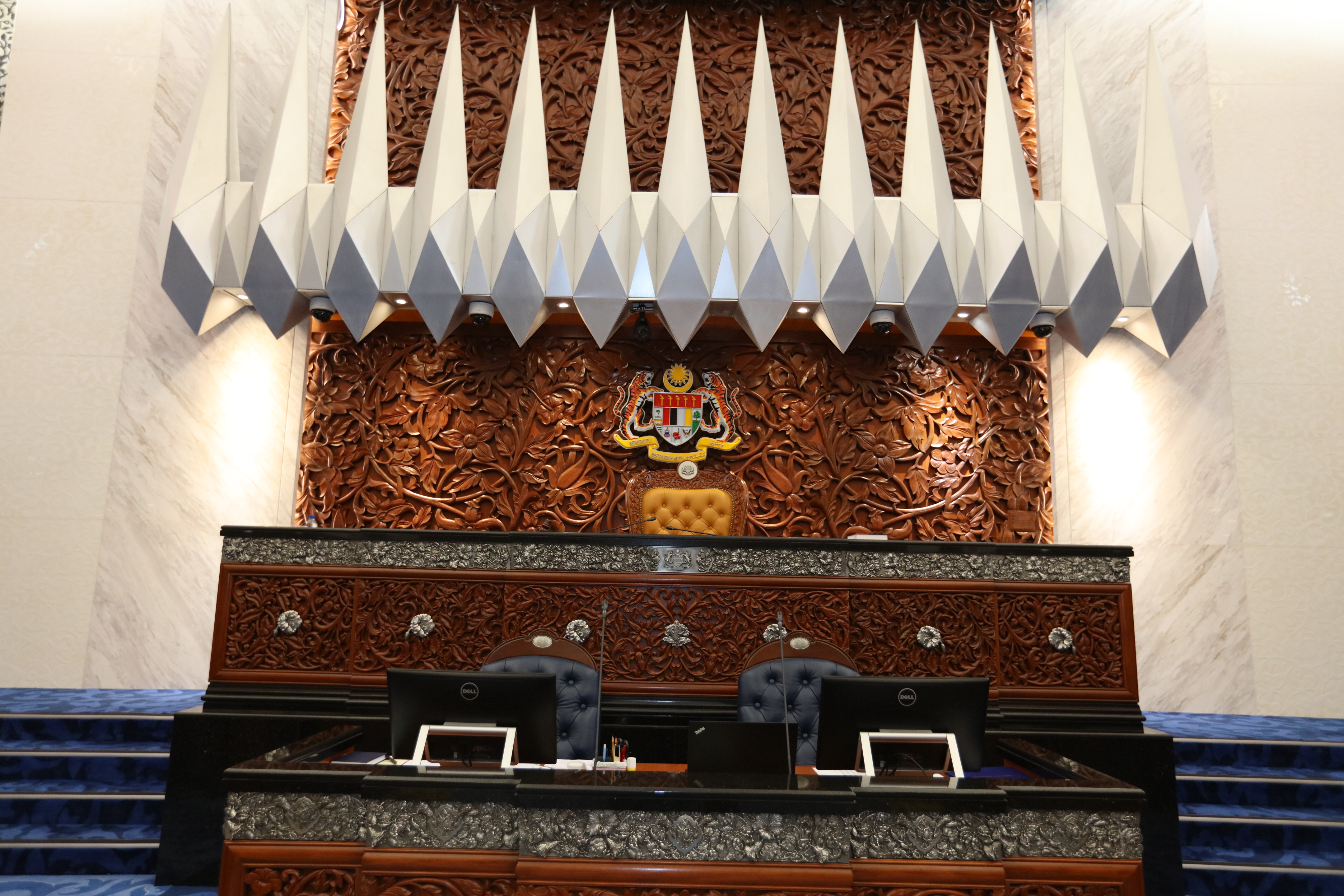A Constitution for a fully independent and sovereign Malaya was drawn up by an independent body of distinguished jurists from several Commonwealth countries headed by Lord Reid.
The Federal Constitution was unanimously adopted by the Federal Legislative Council and it was decided that Parliamentary democracy based on the Westminster model was best for the country.
Tunku Abdul Rahman Putra was appointed as the first Prime Minister of Malaya and his Cabinet consisted of 12 members.
On 31 August 1957, independence was declared at Merdeka Stadium. The Federal Legislative Council remained a unicameral Parliament until its dissolution in June 1959.

Tunku Abdul Rahman Putra with his first Cabinet after Independence. Seated from left to right : Abdul Aziz Ishak, V.T. Sambanthan, Dato' Abdul Razak Hussein, Tunku Abdul Rahman Putra Al-Haj, H.S. Lee, Sulaiman Dato' Abdul Rahman and Sardon Hj. Zubir. Standing from left to right: Ong Yoke Lin, Abdul Rahman Talib, Mohamed Khir Johari, Tan Siew Sin, and Bahaman Shamsuddin (Source: Arkib Negara Malaysia)
With the achievement of Independence on 31 August 1957 the nation had for the first time a Head of State – the late His Majesty Tuanku Abdul Rahman ibni Al-Marhum Tuanku Muhammad.
In accordance with the provisions of the Federal Constitution, His Majesty the King is a constitutional monarch chosen from among the Malay Rulers by the Conference of Rulers.





 www.parlimen.gov.my
www.parlimen.gov.my